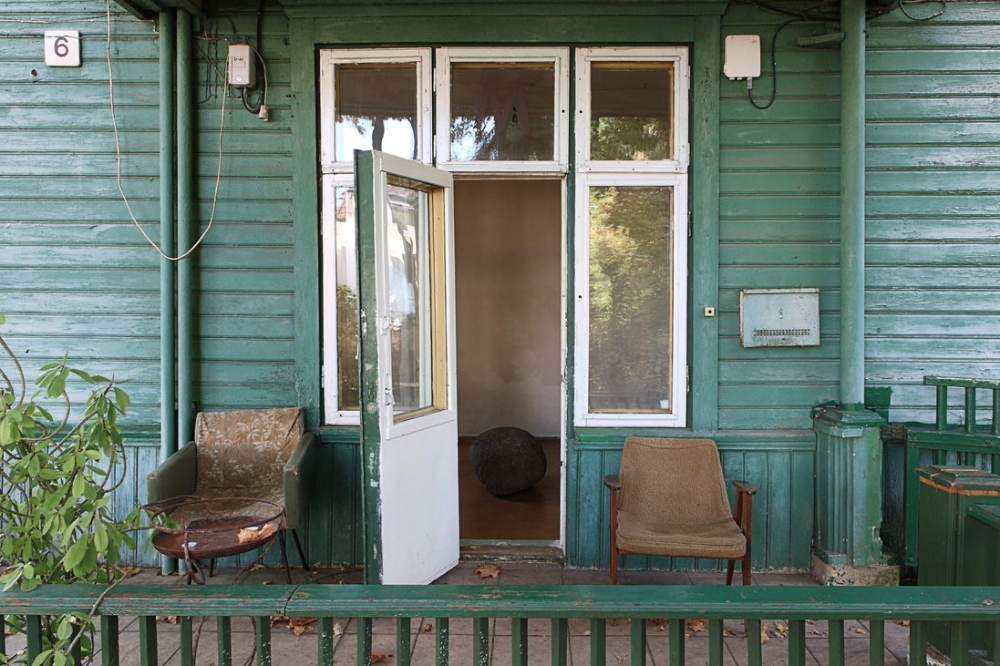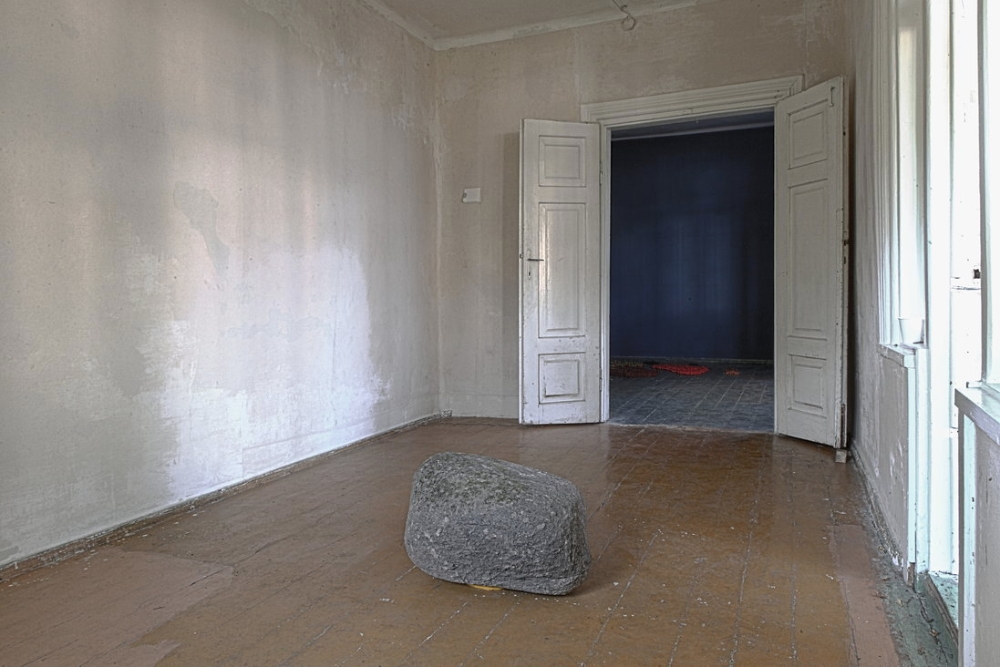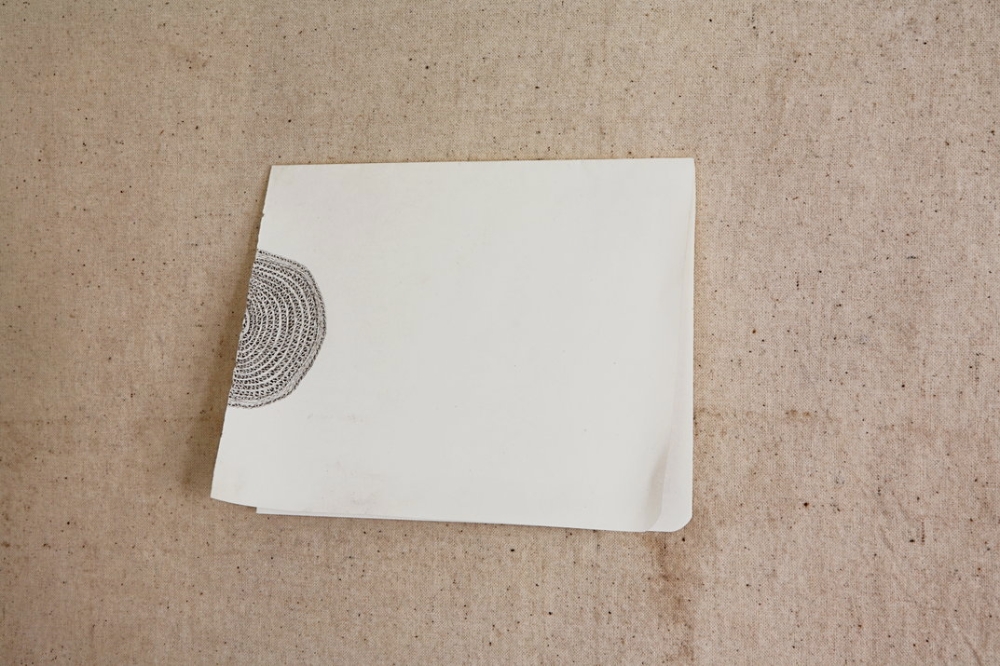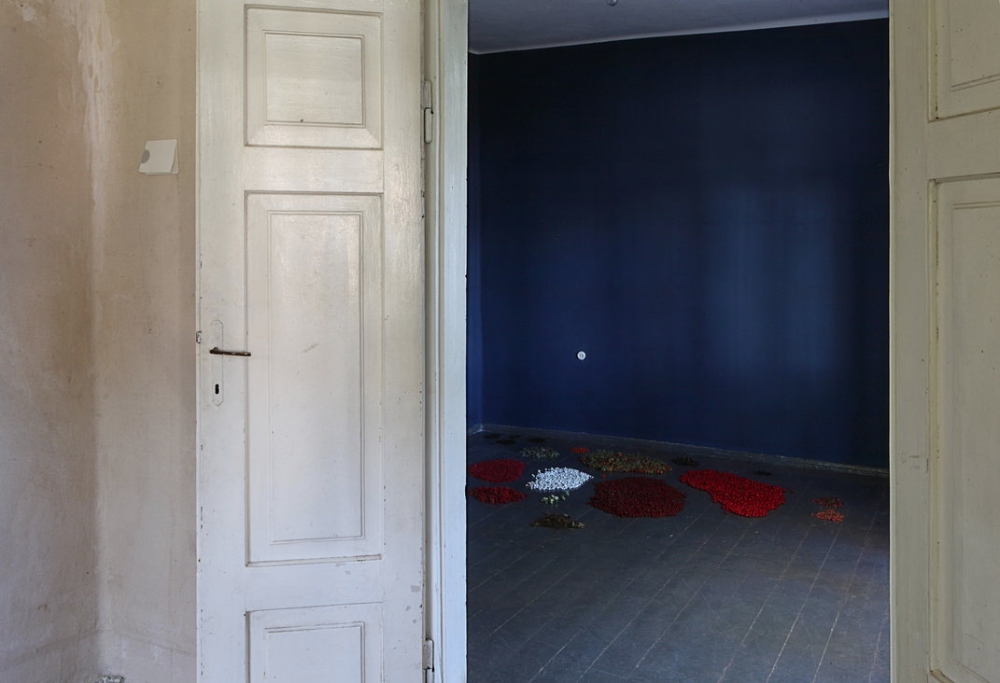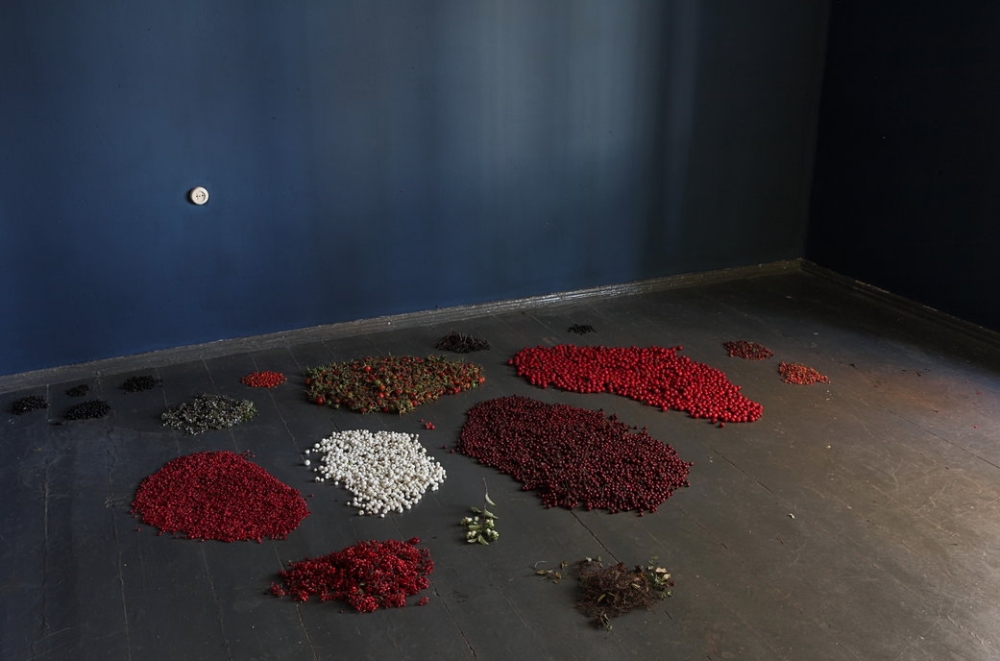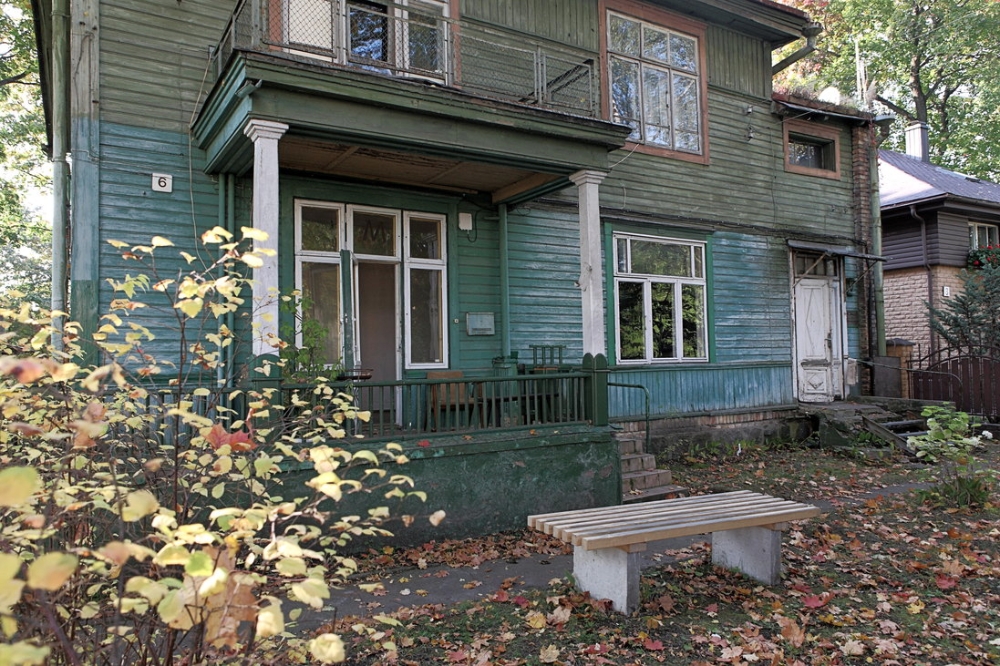Juha Pekka Matias Laakonen was one of the first residents invited to MaloniojiAIR established in 2012 by artist Žilvinas Landzbergas and curator Justė Kostikovaitė. Juha is an interdisciplinary artist whose artistic practice is based on the process itself and the process of conception. Repetitive actions in everyday life form his main research field. For example, it may be walking or simple hand-work, the artist responds to the situation and adjusts his actions. Juha’s work often poetic and continuous. On the occasion of Juha’s show The Great Seal Weigher and Berries of the City which took place at Malonioji 6 from September 13th to October 4th, 2012 Justė Kostikovaitė talks to the artist.
What did you expect during your performance audience to grasp?
Well, the work is done in such setting that it is understandably very difficult to partake as a spectator, and follow up in real time. This is because it takes such a long time and is carried in a solitary setting, which is selective or even exclusive regarding a possible audience. For sure one can think of some aspects of resistance to the methods in relation to the present customs, and in that regard the work was not to be bounded to the result beforehand, even though the work was delivered as routines and as something that could be anticipated.
The work can only be understood in retrospective. I had some hopes for the eye to reconfigure the seemingly static objects, as they were presented during opening hours, while in fact rather being the reference points to the room, the work was geometrically attached in time to the environment. Anyway it is somehow fantastic to me to think that what occurs outside observation always remain present.
Why did you choose to work with stone?
For me at first it was mainly a question of finding a heavy, condensed and ‘self-shaped’ material, something that would bend for the concept of effort and to the idea of only acting in response. Having visited some Giant’s kettles recently, I think I had started to carry the stone in mind quite differently from what I had thought, and eventually became convinced to think ‘things’ being closed within themselves, and this arose another question, to what do the ‘things’ relate to as they scatter and are later found apart. Also it somehow became very intriguing to think about it existing as a mobile foundation.
Then there is the city spaces, and parallel to the human conquerance, the glacial forces, the climatic powers of change, water and again re-settled unit(s). So the boulder seemed right, a part of something yet further whole on its own and the only part of itself, having become unfitting to its rest, whatever that needs to mean. So for sure the possibility is present in the boulder’s non-resisting and passive character, acceptance.
Why is it important for you to work within durational art practice?
For existing wholly in the land of the living, it is a spiritual practice for me, and as such I see the participation important, and one aspect of that has to do with acknowledging oneself time and time again. On the other hand I think I have found a meaning in relating by setting or attempt to become the content – of that which is at hand and is whatever you want to call it, although I don’t think I would go as far as to name it – and to see from there, from within. Perhaps that is why the result should not be documented, and then again I wouldn’t be the one to claim there is a cut between fact and fiction. I also try not to be representative. It doesn’t really have to do with art, nor does it need to, in my opinion. I work simply according to my preferences concerning living and attaining a sort of minimum. Spending time is my favorite thing.
What kind of time-spaces you are trying to activate?
A space occupied and therefore not observed, and therefore not understood. But I think it must be understood in this regard that I doubt there can be something activated by me, but rather activated in me, after which I may respond and have any reason to defend any rights. My own attempts do repeatedly fall in to the passion for endurance, which I think is exactly what has led me further from the thinking of having a beginning and an end. As if you think you do, but actually you are done, and at that point found in the company of something like nothing else.
Can you describe what was happening in the space during your performance?
There are two rooms in (the) space.
At the Opening, one encounters a boulder (Rapakivi granite) erected in the front room facing the central wall opposite of the entrance, a pillow hung on the wall above it and a folded page of paper on each side wall.
The boulder was transported to the house from the forest with exterior aid, for one alone could barely deal with its weight. The pillow was sewn in the same fabric as the walls in the room were covered with. In the making I filled the pillow with buckwheat and crocheted a one-piece case for it out of yellow (1/2 wool, 1/2 polyester) yarn. The pattern of its two sides, were made different.
The papers are a centrefold, ripped in half and folded individually, upper edge against lower edge, making them further half of their size. On both of these papers one can see the half of a circle drawn until the edge of the paper. Right edge on the left wall, left edge on the right wall. These are the beginnings of two individual pencil drawings, together the first circulation for an image.
The door to the inner room is fixed slightly open, so one can see the colour of the room through the crack, as well as from the garden through the window, but can not enter. The walls of the room are painted in dark blue in reminiscent to the iconographic color for the Mother of God.
During the three weeks following the opening, I undertake a three-divisional practice:
Gradually finishing the drawings, as individuals, yet making the halves of one whole.
Picking berries from trees and bushes I find on my way wandering in the city.
Bringing the boulder out from the house.
At the end of the day I carry the freshly picked berries in to the blue room. I pour them in piles on the floor and leave, in order for the drying / rotting to take place in the room alone.
The pillow that first hung on the center wall is placed on the floor and the boulder laid on top of it. The pillow is to keep the boulder from touching the floor at its natural posture and carry it as it glides towards the outdoors. Every time I visit the house, I give the boulder a push.
Upon finishing the drawings, I detach them from the walls, unfold them and bring them next to each other to the spot where the pillow was first seen on the centre wall. As the pages have been opened up, both sides of the fold are seen on the same spread, and the centrefold lined in four quarters. On the upper half, two Finnish words on each quarter become visible.
The words make a sentence when read together, translating ”you are of earth from the beginning from behind.”, but when considered separately (as each page by itself), ”you are of earth” and ”introduce, ensure”.
The bottom half of the centrefold is where the drawing becomes whole, depicting the backside / underside, the unseen pattern of the pillow (the drawing followed the calculations from its making), but in a significantly smaller scale. It was drawn as the pillow, when seen (when still on the wall) from outside, through the glass of the door, as an image on the glass. The interiors volume further out of reach. On this viewpoint now stands the boulder, erected at the end of its glide across the room and out.
The pillow remains in the house, stopped by the threshold. The door to the inner blue room is opened. The berries lie flat on the floor in their fading colour glory, cleaned and flattened down, none on top of the other, pushed together to form an image of the boulder. Now one can enter, while the fumes of the berries that became the content of the room spread.
After the Closing, I bring the berries to where I found the boulder, to fill the void of depression it left in the woods.
More information about The Great Seal Weigher and Berries of the City exhibition here.
Malonioji 6 art space opened its doors in Vilnius in 2012. It is located in a house near the river Neris, in an old wooden cottage with a garden. At the end of the residency artists and curators are asked to use it as space to display their own exhibitions, readings or discussions.
MaloniojiAIR invites artists and provide them with the space for living and working in Vilnius.
MaloniojiAIR is founded by Žilvinas Landzbergas and Justė Kostikovaitė. In 2012 they have invited Axel Linderholm (SE), Merike Estna (EE), Danielle Itzhaqi and Dror Shohet (ISR), Juha Pekka Laakkonen Matias (FI) and curator Alex Ross (US/UK).
